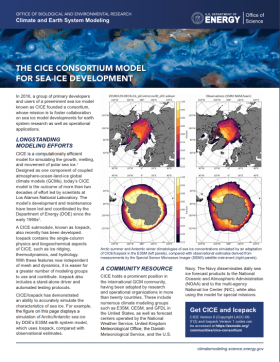CICE Consortium Model for Sea-Ice Development
In 2016, a group of primary developers and users of a preeminent sea ice model, known as CICE, founded a consortium, whose mission is to foster collaboration on sea ice model developments for earth system research as well as operational applications.
CICE is a computationally efficient model for simulating the growth, melting, and movement of polar sea ice. Designed as one component of coupled atmosphere-ocean-land-ice global climate models (GCMs), today’s CICE model is the outcome of more than two decades of an effort led by scientists at Los Alamos National Laboratory. The model’s development and maintenance have been led and coordinated by the Department of Energy (DOE) since the early 1990s.
A CICE submodule, known as Icepack, also recently has been developed. Icepack contains the single-column physics and biogeochemical aspects of CICE, such as ice ridging, thermodynamics, and hydrology. With these features now independent of mesh and dynamics, it is easier for a greater number of modeling groups to use and contribute. Icepack also includes a stand-alone driver and automated testing protocols.
CICE/Icepack has demonstrated an ability to accurately simulate the characteristics of sea ice. For example, the figure on this page displays a simulation of Arctic/Antarctic sea ice by DOE's E3SM earth system model, which uses Icepack, compared with observational estimates.


